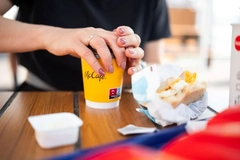Multidimensional brand experience: Design researcher talks simplicity and authentic representation
Simple, meaningful, and culturally responsive packaging design can influence consumer purchasing decisions, according to Chang Liu, researcher at the College of Creative Arts, Universiti Teknologi MARA, Malaysia.
Published in Behavioral Sciences, Liu’s research highlights the impact of visual packaging elements on purchasing intention. Packaging Insights speaks to the researcher about the findings’ broader industry implications, emphasizing simplicity, and culturally sensitive customization. Liu also identifies going “beyond aesthetics” as crucial to effective packaging design.
What are the main trends in packaging design?
Liu: We’re witnessing a substantial shift toward harmony and simplicity in visual design. Our empirical research demonstrates that consumers respond more positively to monochromatic and analogous color schemes than high-contrast combinations.
The preference for visual coherence reflects a broader movement where brands are eschewing visual complexity in favor of clean, immediately recognizable designs that cut through the market noise.
Secondly, there’s a growing preference for authenticity in representation. Our data shows figurative graphics significantly outperform abstract designs, particularly in F&B categories. This represents a market correction from the minimalist abstract designs that dominated previous years.
The third major trend is culturally responsive design customization. Our research with Chinese consumers revealed strong preferences for calligraphic typefaces, contradicting Western design conventions. Global brands are increasingly adapting packaging design across markets rather than maintaining a rigid global consistency.
 Brands are forgoing complex visual patterns in favor of clean and minimalistic designs.How does packaging design impact consumer purchases?
Brands are forgoing complex visual patterns in favor of clean and minimalistic designs.How does packaging design impact consumer purchases?
Liu: Our research reveals that packaging visual elements influence purchase intentions through direct and indirect pathways. We found that color, typography, and layout elements directly affect purchase decisions, while graphics and logo elements work primarily through enhancing the brand experience.
Monochromatic and analogous color schemes showed positive effects on purchase intention, while high-contrast color combinations deterred purchases. For layout, bilateral symmetry demonstrated a positive influence, significantly outperforming grid and centralized designs.
Importantly, our research identified brand experience as a crucial mediator between visual elements and purchase decisions. When packaging creates meaningful sensory, affective, and intellectual experiences, consumers develop stronger purchase intentions.
This highlights that effective packaging design must go beyond aesthetics to create meaningful brand experiences through consumer-brand interactions.
How can businesses ensure their packaging design stands out in a competitive market?
Liu: Creating a positive brand experience should be the central focus of an effective packaging strategy. The most competitive packaging doesn’t merely look attractive — it creates a multidimensional brand experience that significantly mediates purchase decisions.
This means designing packaging as an experiential touchpoint rather than a visual container. Our mediation analysis shows that visual elements most effectively influence purchase intention when creating sensory, affective, and intellectual consumer experiences.
What challenges arise from creating visually appealing packaging design?
 Effective packaging design should create sensory, affective, and meaningful consumer experiences, says Liu.Liu: Balancing different visual elements is complex as each aspect (color, graphics, logo, typography, and layout) contributes differently to purchase decisions.
Effective packaging design should create sensory, affective, and meaningful consumer experiences, says Liu.Liu: Balancing different visual elements is complex as each aspect (color, graphics, logo, typography, and layout) contributes differently to purchase decisions.
Another significant challenge is cultural context and its impact on visual perception. Our findings from Chinese consumers revealed preferences that contradict established Western design principles.
While Western design theory typically favors clear, legible print typefaces, our study demonstrated that Chinese consumers responded significantly more positively to calligraphic fonts.
This cultural divergence extends beyond typography to symbolic interpretations of associated elements. Such findings highlight the risk of applying universal design principles across culturally distinct markets and underscore the need for culturally-informed design approaches, particularly for products with strong cultural associations like tea.
Finally, translating consumer psychology research into practical design applications remains challenging. A clear theory-practice gap exists between abstract theoretical knowledge from academic research and the concrete, actionable design guidelines practitioners need.
Is there a gap between theory and practice in packaging design research?
Liu: Firstly, there’s a divergence between different disciplinary research perspectives. Design research focuses on aesthetic principles and creative applications, while marketing research emphasizes consumer behavior models. These different theoretical foundations create parallel research streams that rarely intersect effectively.
Secondly, while a substantial body of empirical research exists in the current domain, academic research typically isolates individual design elements for experimental control. At the same time, actual purchase decisions respond to integrated design compositions.












